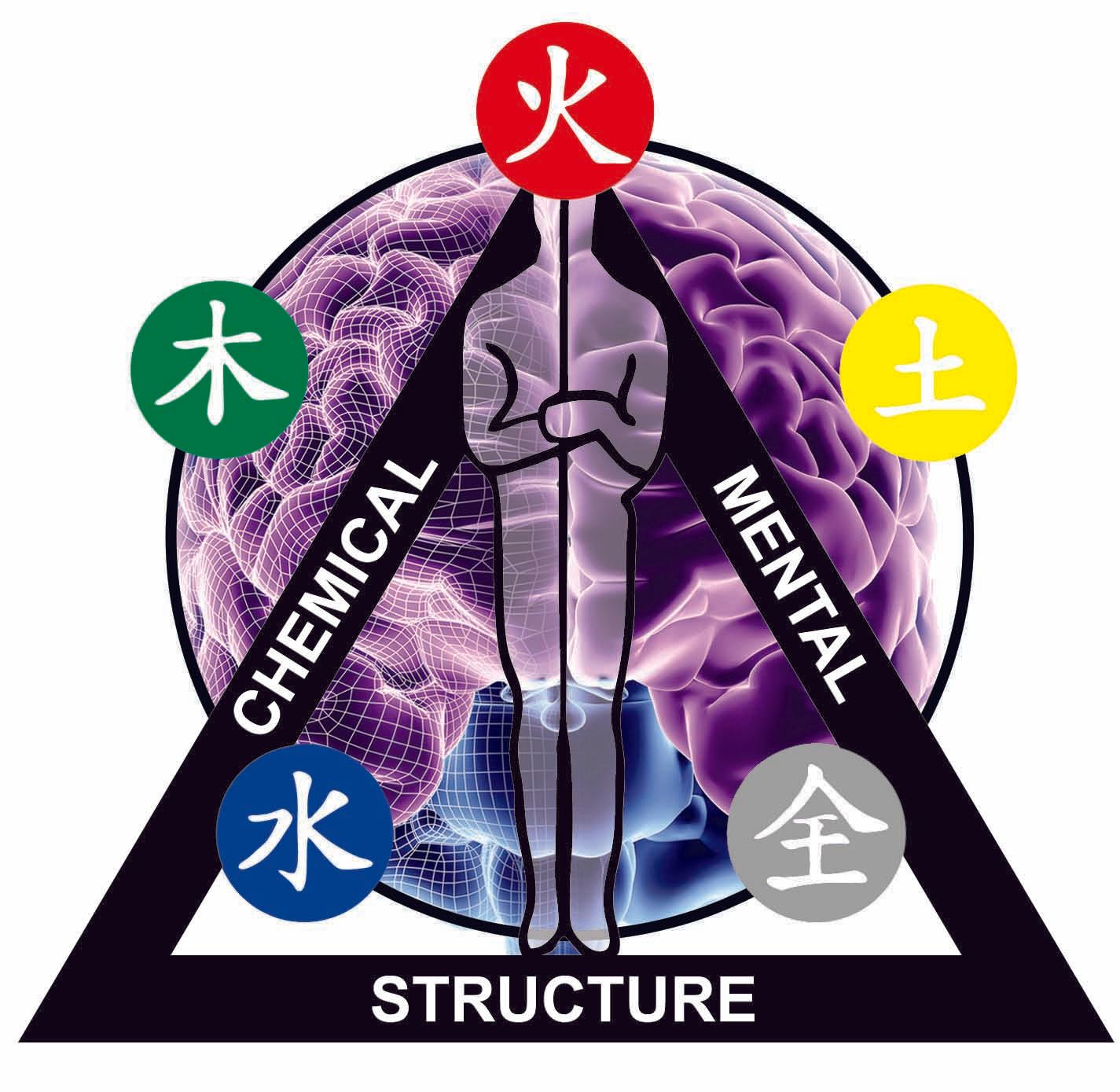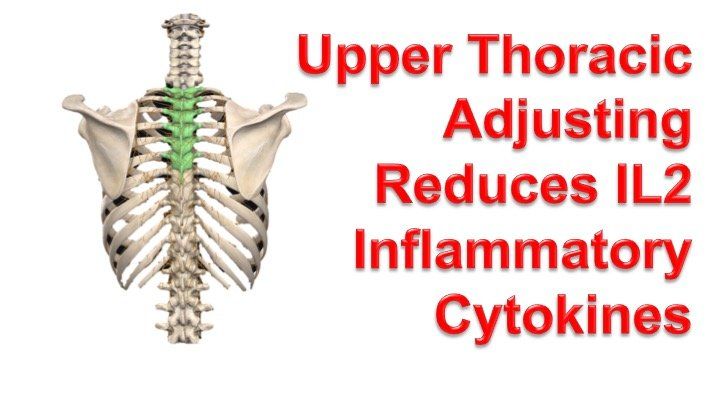More Info
Comment by Dr. Mladenoff
New Paragraph
Interleukin 2-regulated in vitro antibody production following a single spinal manipulative treatment in normal subjects.
A Teodorczyk-Injeyan, Marion McGregor, Richard Ruegg and H Stephen InjeyanEmail author
Chiropractic & Osteopathy201018:26. https://doi.org/10.1186/1746-1340-18-26
Abstract
Background
Our recent investigations have demonstrated that cell cultures from subjects, who received a single spinal manipulative treatment in the upper thoracic spine, show increased capacity for the production of the key immunoregulatory cytokine, interleukin-2. However, it has not been determined if such changes influence the response of the immune effector cells. Thus, the purpose of the present study was to determine whether, in the same subjects, spinal manipulation-related augmentation of the in vitro interleukin-2 synthesis is associated with the modulation of interleukin 2-dependent and/or interleukin-2-induced humoral immune response (antibody synthesis).
Methods
A total of seventy-four age and sex-matched healthy asymptomatic subjects were studied. The subjects were assigned randomly to: venipuncture control (n = 22), spinal manipulative treatment without cavitation (n = 25) or spinal manipulative treatment associated with cavitation (n = 27) groups. Heparinized blood samples were obtained from the subjects before (baseline) and then at 20 minutes and 2 hours post-treatment. Immunoglobulin (antibody) synthesis was induced in cultures of peripheral blood mononuclear cells by stimulation with conventional pokeweed mitogen or by application of human recombinant interleukin-2. Determinations of the levels of immunoglobulin G and immunoglobulin M production in culture supernatants were performed by specific immunoassays.
Results
The baseline levels of immunoglobulin synthesis induced by pokeweed mitogen or human recombinant interleukin-2 stimulation were comparable in all groups. No significant changes in the production of pokeweed mitogen-induced immunoglobulins were observed during the post-treatment period in any of the study groups. In contrast, the production of interleukin-2 -induced immunoglobulin G and immunoglobulin M was significantly increased in cultures from subjects treated with spinal manipulation. At 20 min post-manipulation, immunoglobulin G synthesis was significantly elevated in subjects who received manipulation with cavitation, relative to that in cultures from subjects who received manipulation without cavitation and venipuncture alone. At 2 hr post-treatment, immunoglobulin M synthesis was significantly elevated in subjects who received manipulation with cavitation relative to the venipuncture group. There were no quantitative alterations within the population of peripheral blood B or T lymphocytes in the studied cultures.
Conclusion
Spinal manipulative treatment does not increase interleukin-2 -dependent polyclonal immunoglobulin synthesis by mitogen-activated B cells. However, antibody synthesis induced by interleukin-2 alone can be, at least temporarily, augmented following spinal manipulation. Thus, under certain physiological conditions spinal manipulative treatment might influence interleukin-2 -regulated biological responses.
A Teodorczyk-Injeyan, Marion McGregor, Richard Ruegg and H Stephen InjeyanEmail author
Chiropractic & Osteopathy201018:26. https://doi.org/10.1186/1746-1340-18-26
Abstract
Background
Our recent investigations have demonstrated that cell cultures from subjects, who received a single spinal manipulative treatment in the upper thoracic spine, show increased capacity for the production of the key immunoregulatory cytokine, interleukin-2. However, it has not been determined if such changes influence the response of the immune effector cells. Thus, the purpose of the present study was to determine whether, in the same subjects, spinal manipulation-related augmentation of the in vitro interleukin-2 synthesis is associated with the modulation of interleukin 2-dependent and/or interleukin-2-induced humoral immune response (antibody synthesis).
Methods
A total of seventy-four age and sex-matched healthy asymptomatic subjects were studied. The subjects were assigned randomly to: venipuncture control (n = 22), spinal manipulative treatment without cavitation (n = 25) or spinal manipulative treatment associated with cavitation (n = 27) groups. Heparinized blood samples were obtained from the subjects before (baseline) and then at 20 minutes and 2 hours post-treatment. Immunoglobulin (antibody) synthesis was induced in cultures of peripheral blood mononuclear cells by stimulation with conventional pokeweed mitogen or by application of human recombinant interleukin-2. Determinations of the levels of immunoglobulin G and immunoglobulin M production in culture supernatants were performed by specific immunoassays.
Results
The baseline levels of immunoglobulin synthesis induced by pokeweed mitogen or human recombinant interleukin-2 stimulation were comparable in all groups. No significant changes in the production of pokeweed mitogen-induced immunoglobulins were observed during the post-treatment period in any of the study groups. In contrast, the production of interleukin-2 -induced immunoglobulin G and immunoglobulin M was significantly increased in cultures from subjects treated with spinal manipulation. At 20 min post-manipulation, immunoglobulin G synthesis was significantly elevated in subjects who received manipulation with cavitation, relative to that in cultures from subjects who received manipulation without cavitation and venipuncture alone. At 2 hr post-treatment, immunoglobulin M synthesis was significantly elevated in subjects who received manipulation with cavitation relative to the venipuncture group. There were no quantitative alterations within the population of peripheral blood B or T lymphocytes in the studied cultures.
Conclusion
Spinal manipulative treatment does not increase interleukin-2 -dependent polyclonal immunoglobulin synthesis by mitogen-activated B cells. However, antibody synthesis induced by interleukin-2 alone can be, at least temporarily, augmented following spinal manipulation. Thus, under certain physiological conditions spinal manipulative treatment might influence interleukin-2 -regulated biological responses.

